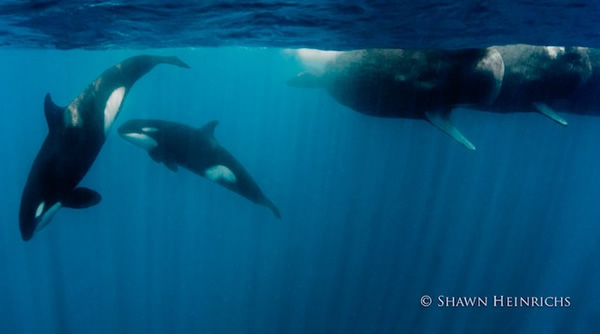
Trains, Mountains, Rivers, and Trees, a few of our favorite things.
Carolina Naturally is read in 191 countries around the world daily.
Today is Arbor Day
Don't forget to visit our sister blog!

| 757 | Stephen II ends his reign as Catholic Pope. | |
| 1478 | Pazzi conspirators attack Lorenzo and kill Giuliano de'Medici. | |
| 1514 | Copernicus makes his first observations of Saturn. | |
| 1564 | William Shakespeare is baptized. | |
| 1607 | The British establish a colony at Cape Henry, Virginia. | |
| 1865 | Joseph E. Johnston surrenders the Army of Tennessee to Sherman. | |
| 1915 | Second Lieutenant Rhodes-Moorhouse becomes the first airman to win the Victoria Cross after conducting a successful bombing raid. | |
| 1929 | The first non-stop flight from England to India is completed. | |
| 1931 | New York Yankee Lou Gehrig hits a home run but is called out for passing a runner, the mistake ultimately costs him the home run record. | |
| 1937 | The ancient Basque town of Guernica in northern Spain is bombed by German planes. | |
| 1941 | The first organ is played at a baseball stadium in Chicago. | |
| 1968 | Students seize the administration building at Ohio State University. | |
| 1983 | The Dow Jones Industrial Average breaks 1,200 for first time. | |
| 1986 | The world's worst nuclear disaster occurs at the Chernobyl power plant in the Soviet Union. | |
| 1994 | Nelson Mandela wins the presidency in South Africa's first multiracial elections. |

In the halls of the United States Senate, dozens of Senators congratulated themselves today for having what one of them called “the courage and grit to stand up to the overwhelming wishes of the American people.”
“We kept hearing, again and again, that ninety per cent of the American people wanted us to vote a certain way,” said Senate Minority Leader Mitch McConnell (r-Kentucky). “Well, at the end of the day, we decided that we weren’t going to cave in to that kind of special-interest group.”
“It was a gut check, for sure, but we had to draw a line in the sand,” agreed Senator Lindsey Graham (r-S. Carolina). “If we had voted the way the American people wanted us to, it would have sent the message that we’re here in Washington to be nothing more than their elected representatives.”
Even if you don’t blame the [debt] crisis on the shrub, at least half the debt is directly attributable to his policy choices. Racking up debt isn’t necessarily a bad thing, and some have even argued that surpluses can be economically dangerous, but for whatever it’s worth, Bush played a big role there. It’s also worth noting that the shrub was increasing the deficit at a time when the economy was expanding — which is exactly the opposite of what Keynesians believe makes sense, and which also made it more difficult for the country to respond to the recession.
 Ammonium
nitrate is a volatile compound, but very useful as a fertilizer for
enriching soil with nitrogen. Its only other use is as an explosive. A
factory fire at a fertilizer plant in West, Texas, ignited a stockpile
of ammonium nitrate and the resulting explosion killed 14 people and
sent over a hundred to hospitals last Wednesday, but its only the latest
of the many ammonium nitrate disasters. Oregon had a big one in 1959.
Ammonium
nitrate is a volatile compound, but very useful as a fertilizer for
enriching soil with nitrogen. Its only other use is as an explosive. A
factory fire at a fertilizer plant in West, Texas, ignited a stockpile
of ammonium nitrate and the resulting explosion killed 14 people and
sent over a hundred to hospitals last Wednesday, but its only the latest
of the many ammonium nitrate disasters. Oregon had a big one in 1959.Truck driver George Rutherford parked his truck in front of the Garretsen Building Supply Company in downtown Roseburg, Oregon, on the night of August 6, 1959. He then retreated to the nearby Umpqua Hotel to get some rest before his morning delivery. The delivery never happened, because sometime between midnight and 1 a.m., the Garretsen Building Supply Company caught on fire. Shortly thereafter, the fire ignited the contents of Rutherford’s truck—two tons of dynamite and 4.5 tons of ammonium nitrate. All of the buildings in an eight-block radius were totally destroyed (pictured above) and 14 people died. Rutherford survived.But that's just one explosion. There are plenty of other disasters caused by ammonium nitrate to read about here.


He appeared with his attorney Wednesday on CNN. During his detention, he said, investigators "treated me like gold, but they intensely interrogated me for hours. It was nerve-wracking." Then, at the prompting of a mischievous interviewer, Curtis began to sing a Randy Travis tune, "On the Other Hand," and hugged his laughing attorney, Christi McCoy of Oxford, Miss.
That may explain why roughly half of patients taking efavirenz at the prescribed dose have reported neuropsychiatric side effects that include suicidal depression, night terrors, hallucinations, paranoia, psychosis and delusions. And it may also explain why efavirenz tablets are reportedly being ground up and smoked by drug abusers looking for a hallucinogenic high.Read more at latimes.com.


















“We saw the water churning on the horizon,” said Shawn Heinrichs, a photographer and filmmaker who was in the area looking for blue whales. Heinrichs and his colleagues steered their boat toward the patch of white water. As they got closer, they saw an enormous dorsal fin slicing through the water — a killer whale trademark — and then noticed the group of sperm whales, clustered together in a defensive stance.Nadia Drake of Wired has more: Here.
At that point, Heinrichs did what many of us would not do: He jumped in.
“I grabbed my camera and slid off the side of the boat,” he said. “There was a frothing, dark pile of shapes ahead of me. When I drifted away from the boat, the largest orca in the pod made a beeline for me but veered off at the last moment and dove deep.”
 Groupers
hunt for small fish in open water, but sometimes they will beckon to a
moray eel or a humphead wrasse to go hunting with them. Morays and
wrasses will grab fish out of crevices and places a grouper can't reach
-and if it flushes more of them out, the grouper can catch them. But
what is weird is how the grouper recruits an eel, as observed by Alexander Vail from the University of Cambridge.
Groupers
hunt for small fish in open water, but sometimes they will beckon to a
moray eel or a humphead wrasse to go hunting with them. Morays and
wrasses will grab fish out of crevices and places a grouper can't reach
-and if it flushes more of them out, the grouper can catch them. But
what is weird is how the grouper recruits an eel, as observed by Alexander Vail from the University of Cambridge.The groupers always summoned the wrasses and morays with a vigorous shimmy, but they also used a second, much rarer signal—a headstand, combined with head-shaking. Vail thinks it was a signal, one that said: “The prey’s in here, guys!”The researchers were impressed, but they caution that such cooperative behavior doesn't necessarily mean these fish have high intelligence. See videos of the tag teams in action at Not Exactly Rocket Science.
When doing their headstands, the groupers always swam over the location of hidden prey that they had failed to catch. They only used the move when a moray or wrasse was nearby, continued to do so until one arrived, and stopped as soon as one did.
Most morays and all wrasses headed towards the grouper’s location when they saw the signal, causing the prey to break their cover. (The fact that the prey didn’t abandon their hiding spots beforehand shows that the headstand itself isn’t a hunting tactic.) And when the morays ignored the headstand, the groupers actually swum after their partner and either performed their “recruitment shimmy” or forcibly tried to push the eels in the right direction.